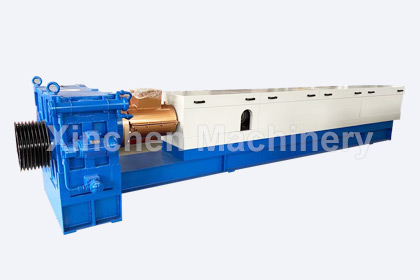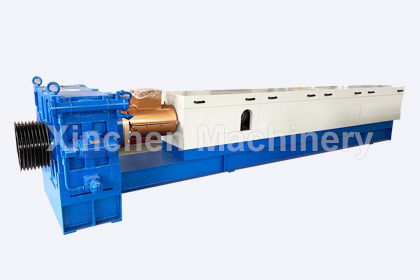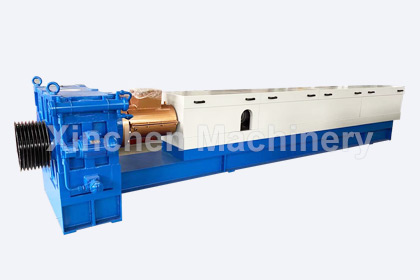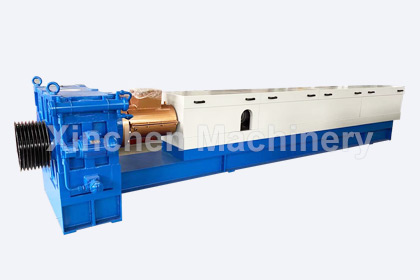pvc extrusion machine
Date:2022-3-01 Author:XCEXTRUSION
Pvc extrusion machine is equidistant unequal depth gradient type and equidistant unequal interval gradient type single screw extruder machine. as well as counter-rotating parallel twin-screw and conical twin screw extrusion machine.
Screw design principles:
- The temperature is strictly controlled, and the screw design should be as low as possible to prevent overheating.
- The screw and barrel should be anti-corrosion.
- The injection molding process needs to be strictly controlled. Generally speaking, the screw parameters are L/D=16~20, h3=0.07D, ε=1.6~2, L1=40%, L2=40%.
In order to prevent the material from being stored, there is no non-reverse ring, and the taper of the head is 20°~30°. It is more suitable for soft rubber. If the product requirements are higher, a separate screw without metering section can be used.
This kind of screw is more suitable for rigid PVC. In order to cooperate with temperature control, cooling water or oil holes are added inside the screw in the feeding section. The barrel is equipped with cold water or oil tank, and the temperature control accuracy is about ±2℃.
Soft PVC granulation using co-rotating twin-screw extruder. The screw conveying compression section should be selected with high conveying efficiency. And it is a gradually compressed structural design.
The temperature difference and fluctuation should be reduced in the mixing, conveying and dispersing section. Ensure high mixing efficiency and quality.
The exhaust section ensures that the vapors are fully volatilized and discharged. The compression section should have an appropriate aspect ratio. The metering section ensures that the material is extruded evenly.
In general.
For a screw with an aspect ratio of 32. Generally, the conveying compression section L/D=11~12. Mixing and conveying section L/D=8~9. Exhaust section L/D=3~3.5. Compression section L/D=5~8. Metering section L/D=3~4.
For the molding of rigid PVC products such as PVC profiles/pipes, conical twin screw extruders have outstanding advantages. It is the mainstream processing model.
Under the same flight structure, although the length of the parallel twin-screw in the feeding section is 60% longer than that of the conical twin-screw. But the heat transfer area is 45% smaller.
At the same time, when the conical twin-screw is conveyed, the relative movement speed between the materials is greater than that of the parallel screw. That is, the shear heat generated by the conical screw is greater than that of the parallel screw. Therefore, the plasticizing effect of the conical twin screw in the feeding section is better than that of the parallel screw.
In addition, the conical twin screw is continuously reduced during the conveying process due to its channel volume. The extrusion effect is enhanced, so that the material is fully contacted with the screw. Thus the conical screw can provide higher energy conversion. The effect of pre-molding is better.
In the metering section, the conical twin screw is smaller due to the smaller diameter of the screw. The shearing effect on the material is weakened. The shear heat generated is small. It just meets the requirements of UPVC plasticization and extrusion.



